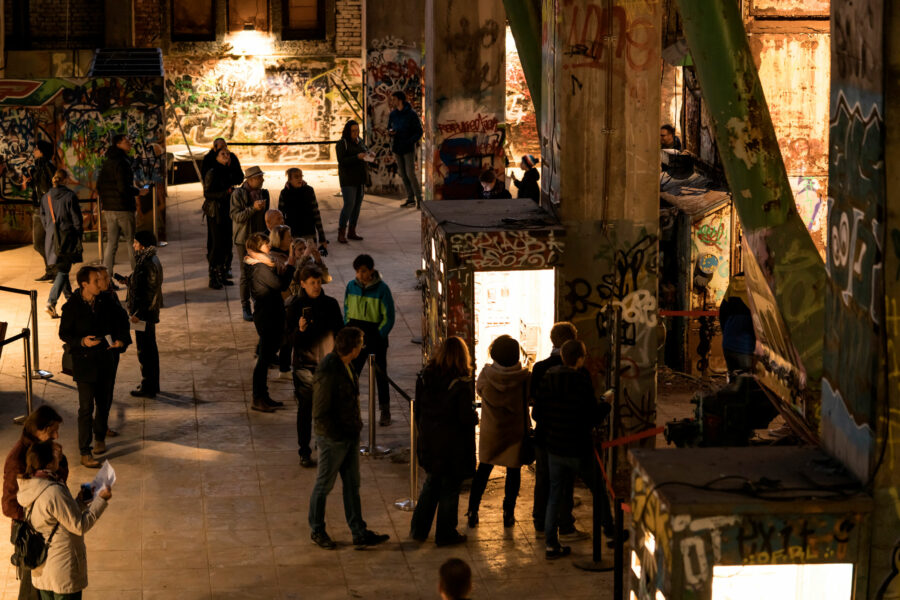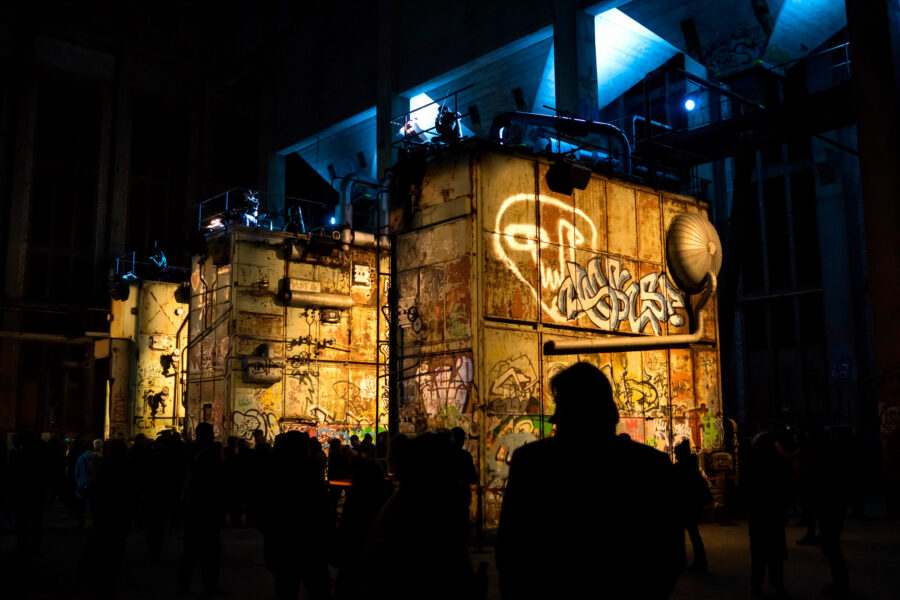MAYA: Mixed-Reality-Techno-Opera – Multimedia Experience





Description
As the worlds first Augmented Reality opera, MAYA staged the former heating plant Munich-Aubing as a historic site.
Through the AR-app on the own smartphone, the spectator betook himself in the perspective of a new civilization in the distant future, and looked back in amazement on the demise of our current civilization in the near future.
Singer Martina Koppelstetter took on the role of „Maya“. She was on a mission. Would she manage to rescue the Cyberspace and with it herself and the humanity?
FORM:
MAYA transcended the core of an opera into the present: intoxication, ecstasy and extension of consciousness through music, sound, light and digital art. Opera and Techno: both stand for a powerful rebellion – against death, against loneliness. For a life without limits. For the promise of a world in which we live according to our boldest imaginations, without ever encountering physical limitations.
MAYA was a game of opposites. The future stood next to the past. Materiality encountered immateriality. New compositions met pieces from Domenico Gabrielli (16th century), Steve Reich (1967) and KP Werani (2017). The string trio TrioCoriolis played live with, against and in the electronic soundscapes of Klavikon, Jörg Hüttner, Björn Eichelbaum and Rumpeln. The lighting design by Urs Schönebaum fitted like a sculpture into the room.
“Being a peanut would be great. Or a tapeworm. Or a ramshorn snail.”
Author Thomas Jonigk put the language of a human being into the mouth of Maya, who was forced to rediscover her physicality in order to survive as a digital being.
RESULT:
A rich cosmos of impressions was offered, a world that the viewer could acquire through his own efforts. This wealth, which can only be explained with words and pictures in a complicated and insufficient way, was experienced locally as “great freedom”, as one of the 1,500 visitors (over five performances) called it.
All means and narrative strands were developed out of the specific location of the ruins, nothing was obviously invented on top. No props, no grandstand, no stage: a “minimally invasive” approach that made the room the main actor.
Each scene replayed the room, Maya appeared again and again somewhere else, the audience followed her in ever new configurations. Introduced by the AR app, viewers stayed in a mode of discovery, not consumption, from beginning to end.